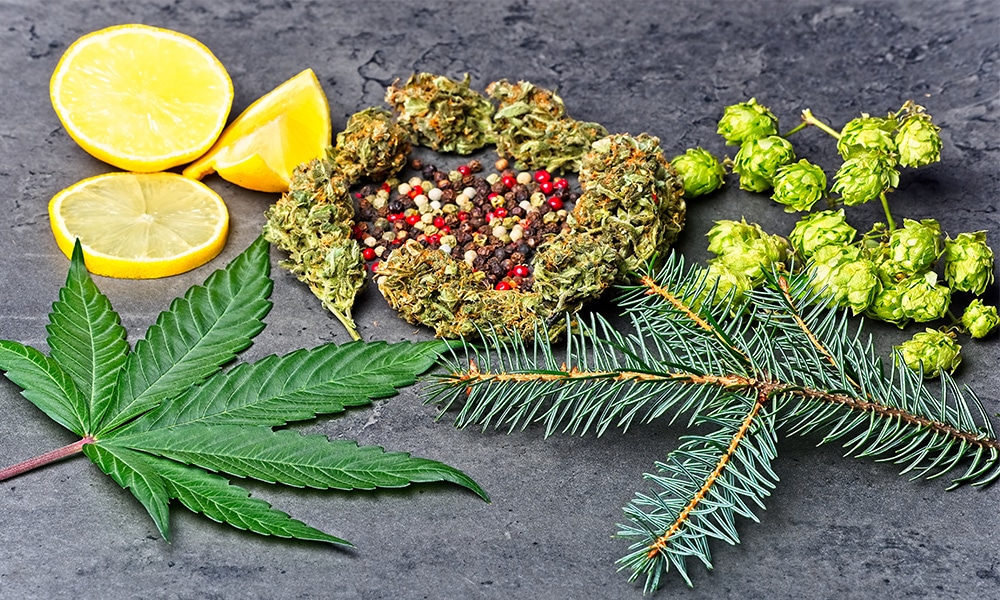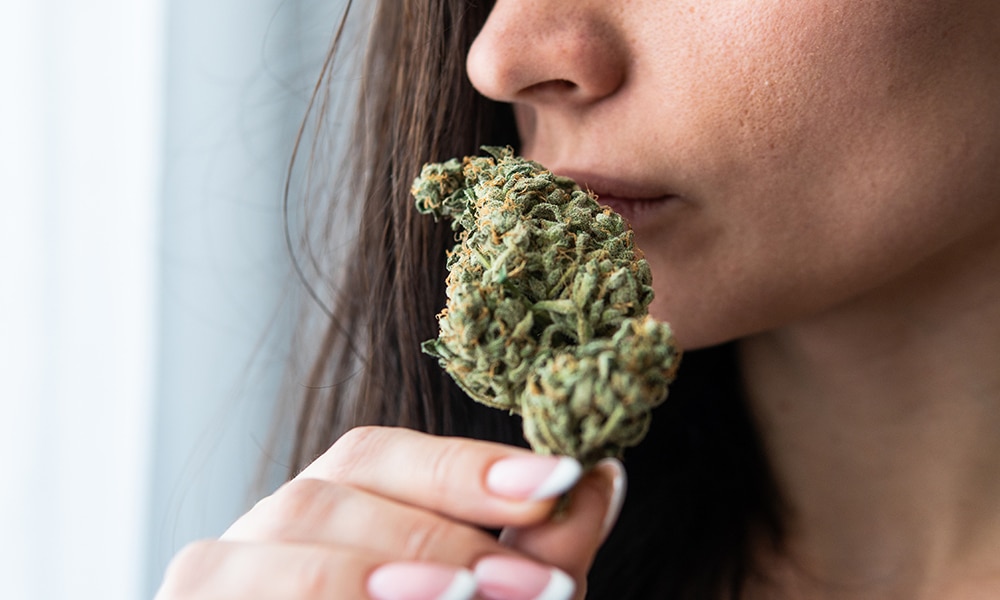You’ve heard of CBD and THC, those wonderful naturally occurring compounds that make cannabis what it is. CBD and THC are cannabinoids, meaning that they bind to receptors in the body’s endocannabinoid system and help to regulate functions like sleep, mood, and appetite. CBD and THC are responsible for many of the benefits associated with cannabis, but it’s the terpenes that help them do what they do.
What Are Terpenes?
Terpenes are organic chemical compounds that give plants their signature smell and taste. There are terpenes in all kinds of plants, from raspberries to lavender, but they’re most often talked about today in connection to cannabis.
The cannabis plant can produce 150 or more different types of terpenes. Additionally, each variety has a different terpene blend. That’s part of what distinguishes one cultivar from another.
What Types Are There?
Most terpenes in cannabis can be grouped into one of two categories: monoterpenes and sesquiterpenes. Monoterpenes are structurally simpler and have a lighter aromatic profile. Myrcene, linalool, and limonene are all famous examples.
Sesquiterpenes have a more complex chemical structure. The result is a deeper, earthier sensory experience. When you smell a piney or smoky scent in your cannabis, you’re noticing the sesquiterpenes—possibly humulene or caryophyllene.
What Do They Do?
Terpenes do more than just make your cannabis flower smell and taste a certain way. They also interact with the cannabinoid receptors that THC and CBD bind to, changing the way the strain affects you.
Take myrcene, for example. Myrcene is one of the most commonly found terpenes in the cannabis family, and it may play a significant role in how you feel after you use the drug. If your cultivar has less than 0.5% myrcene you’re more likely to experience a burst of energy. More than 0.5% myrcene and the strain is more likely to be sedative.
Dominant Terpenes and What They Do
Other terpenes can enhance the therapeutic effect that CBD and THC have on the body’s endocannabinoid system.
- ɑ-Pinene may improve your focus, strengthen your memory, and boost your energy. It may improve a cultivar’s effectiveness in dilating the bronchial tubes
- Linalool is synonymous with anti-anxiety and antidepressant properties. It can also make a product more effective at reducing the symptoms of seizures or psychosis.
- Limonene is also present in cultivars used to treat depression and anxiety. It can also lift the mood and relieve nausea
- Humulene products containing α-Humulene effective at reducing inflammation and relieving pain.
The scent and taste experience of each terpene can tell you a lot about its benefits. Humans perceive lemon as energizing and lavender as relaxing, a connection that many believe is the brain’s way of communicating the effects of a plant.
The nose knows. Sometimes, it’s as simple as smelling your product. Your product’s aroma can often indicate what is ‘best for you’. If a smell is pleasant, that is your body’s way of indicating that it prefers the terpenes that are dominant in that particular product.
Terpenes in the Spotlight
While skilled cultivators have bred their plants based on desirable terpene profiles, it has taken a while for this knowledge to reach consumers. In California, products that cite terpenes on their labels must run a test with a licensed testing lab to confirm the terpenes present. Insights into terpenes’ roll in our experience are gaining popularity.
Pay attention to the terpene profiles of the strains that you like. Research the individual terpenes and their effects. That way, you can discover new strains with similar benefits or try out something completely new.
The more you know about the plant, the more you’ll benefit from the many varieties of cannabis available today.


